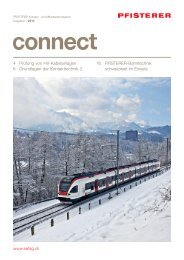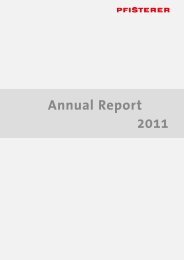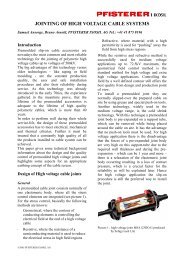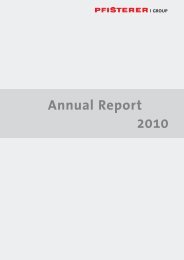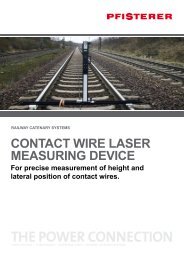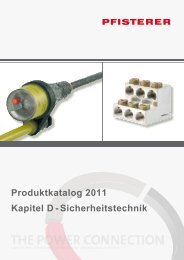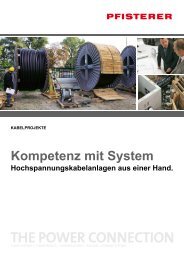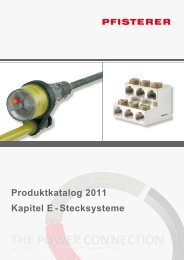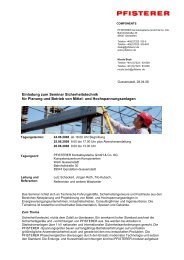Bending of helically twisted cables under variable ... - Pfisterer
Bending of helically twisted cables under variable ... - Pfisterer
Bending of helically twisted cables under variable ... - Pfisterer
Create successful ePaper yourself
Turn your PDF publications into a flip-book with our unique Google optimized e-Paper software.
The tensional stress in the wire is then:<br />
where:<br />
is the strain stiffness <strong>of</strong> the cable.<br />
2.2. The secondary stress<br />
The The derivations derivations below are based on on the the work work by Leider (1973, (1973, 1975), 1975), who who has has made major contributions<br />
to to the the bending bending <strong>of</strong> <strong>cables</strong>. For For a a better better overview, overview, they they are are applied applied in in part part to a a single single layer, layer, 7-wire 7 <strong>helically</strong><br />
<strong>twisted</strong> cable – i.e. a cable with a core wire surrounded by a helical layer <strong>of</strong> 6 wires. It is further assumed<br />
that the wires in the layer do not touch each other circumferentially – an assumption which is generally<br />
true for the <strong>cables</strong> without fillers investigated here and for ACSR high voltage overhe overhead ad conductors.<br />
This This can can be be achieved achieved through through a a slight increase increase <strong>of</strong> <strong>of</strong> the diameter <strong>of</strong> <strong>of</strong> the core wire wire over over that <strong>of</strong> the wires in<br />
the layer [Leider, 1975, Feyrer, 1990].<br />
The tensile forces ZL in in the the individual individual wires <strong>of</strong> <strong>of</strong> the cable layer layer create a radial force force on on the layers<br />
<strong>under</strong>neath, or the core wire, corresponding to a radially oriented distributed load pL. p . This load is:<br />
where ρL is the curvature radius <strong>of</strong> a wire helix <strong>of</strong> the layer and rrL<br />
is the coil radius <strong>of</strong> this layer. Fig. 2.4<br />
shows the parameters in the cable.<br />
11



